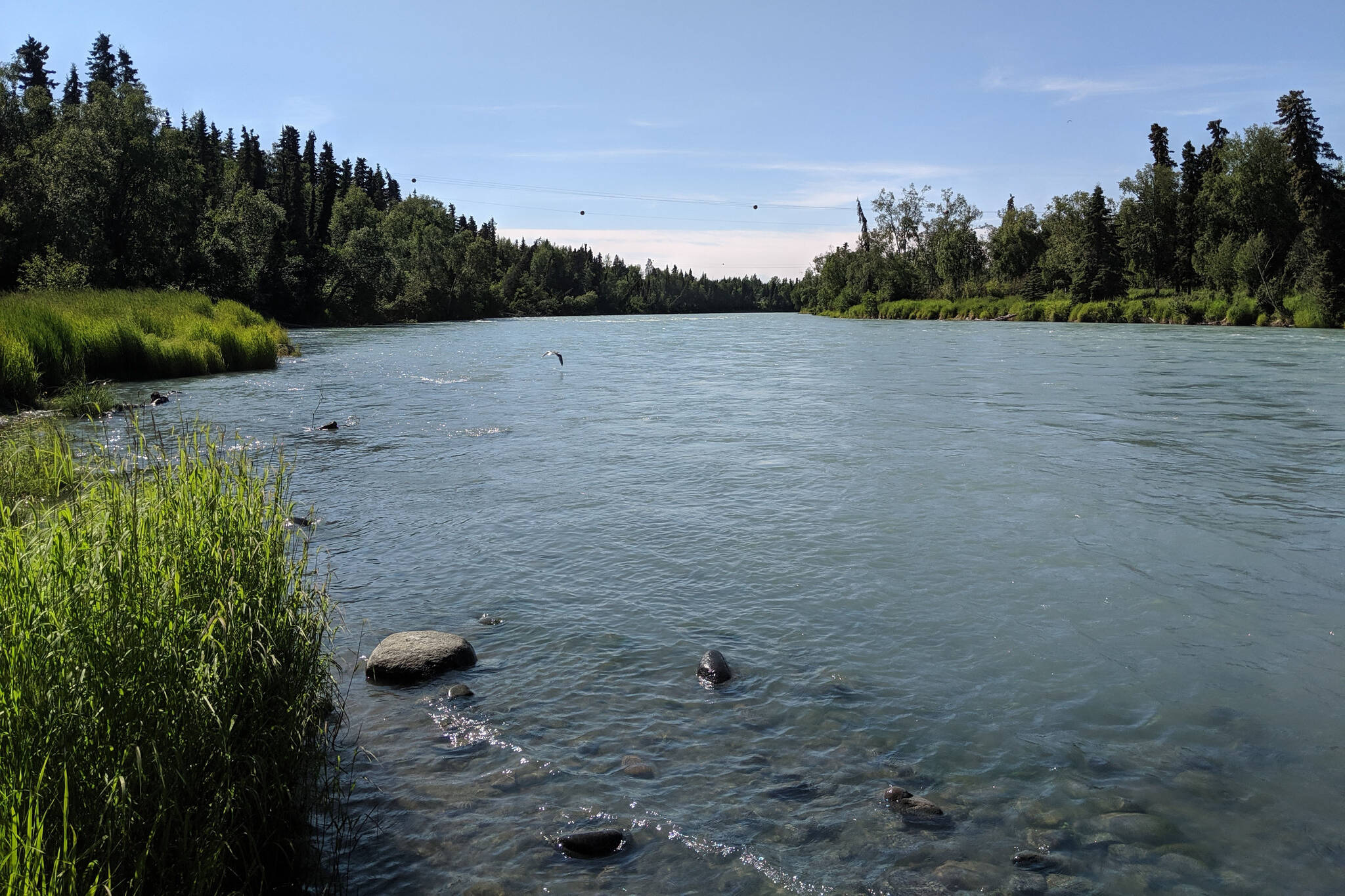The 2022 Kasilof River sockeye salmon run was the strongest of all in Upper Cook Inlet this season, according to a commercial salmon summary report published by the Alaska Department of Fish and Game earlier this week.
In the Kasilof River, the sockeye salmon run was 59% higher than expected. The department forecast about 941,000 sockeye in the Kasilof, when the actual run was about 1.5 million. The peak passage day for sockeye in the Kasilof was on July 20, when more than 125,600 salmon were counted.
Sockeye salmon in the Kasilof River also surpassed the department’s 2022 biological escapement goal. The upper end of that goal is 320,000 fish. This year, the count was more than 971,000 fish — a new record.
In the Kenai River, there were about 220,000 less sockeye salmon than expected. For the Kenai River, the department forecast a run of about 2.9 million sockeye, however the estimated actual run was about 2.7 million. The peak passage day for sockeye salmon in the Kenai River was July 20, when 189,000 sockeye were counted.
It was another low year for commercial harvest of chinook salmon. About 2,300 chinook salmon were harvested this year, as compared to about 4,000 last year. The Northern District set gillnet fishery and the east side setnet fishery are the two largest harvesters of chinook salmon in Upper Cook Inlet, the report says.
Harvest of chinook salmon by the east side setnet fishery is guided by the Kenai River Late-Run King Salmon Management Plan. That plan says ADF&G must close the commercial set gillnet fishery in the Upper Subdistrict if the projected late-run large king salmon escapement is less than 15,000 fish.
“As predicted, the 2022 Chinook salmon run turned out to be below average, and even lower than the preseason forecasts, leading to both preseason and inseason conservation-based management actions and closures,” the report published Tuesday says.
Low king salmon numbers triggered the closure of set gill net fishing in the Kenai, Kasilof and East Forelands sections of the Upper Subdistrict. That closure prompted outcry from east site setnet fishers, many of whom said they were being unfairly punished over a species that they don’t target.
In all, the 2022 sockeye salmon harvest in the east side setnet fisheries was about 104,700 fish — 84% less than the recent 10-year average, according to the summary report. Between June 23 and July 14, more than 81,000 sockeye were harvested from the Kasilof section. Between July 11 and July 14, just over 23,000 sockeye were harvested in the Kenai and East Foreland sections.
The total ex-vessel value of this year’s commercial salmon harvest was about $12.3 million. That’s 44% less than the recent 10-year average annual harvest. The National Oceanic and Atmospheric Administration defines ex-vessel value as a measure of the dollar value of commercial landings.
Of the $12.3 million, about 93% is accounted for by sockeye salmon. Using a cost estimate of two dollars per pound of sockeye, the ex-vessel value of that species this season is estimated to be just over $11.3 million. That’s compared to the total value of chinook salmon this season — about $53,000 — and chum — about $435,000.
The 2022 Upper Cook Inlet Commercial Salmon Fishery Season Summary can be found on the Alaska Department of Fish and Game’s website at adfg.alaska.gov.
Reach reporter Ashlyn O’Hara at ashlyn.ohara@peninsulaclarion.com.
CORRECTION: This story has been updated to clarify that there was a difference of 220,000 sockeye salmon between the Alaska Department of Fish and Game’s forecasted run to the Kenai River and the estimated actual run. The Clarion regrets the error.

